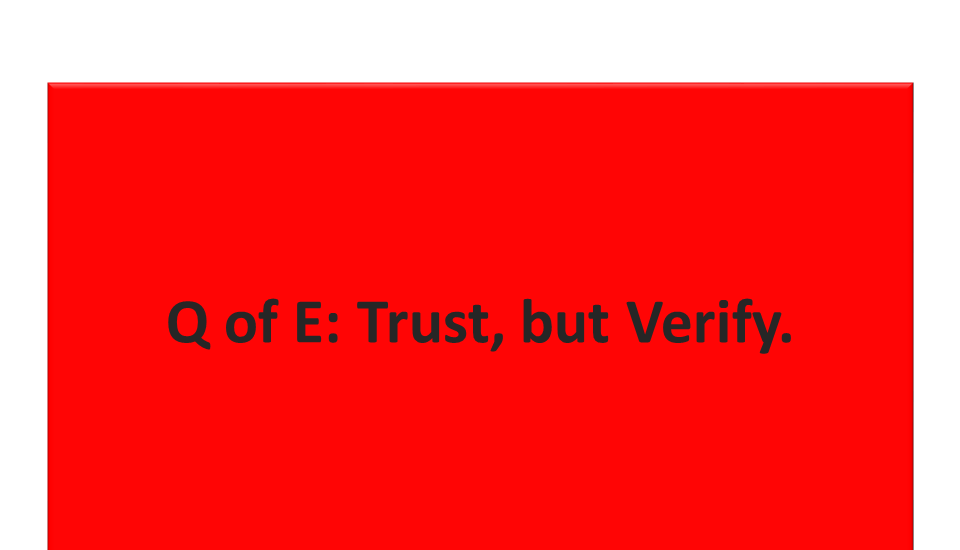- March 25, 2021
- Posted by: Vishwas Sinha
- Categories: Finance & accounting, Transaction Advisory

The pandemic has catalyzed the M&A deal flow. Many companies are looking for good buyers, whereas new capital has been infused into the buyer’s pipeline. Overall, there are some really good opportunities available for interested buyers and sellers. But before you enter a preliminary agreement, it would be prudent for both buyers and sellers to hire independent professionals to conduct a Quality of Earnings (better known as “Q of E”) analysis. A thorough Q of E would provide a third party analysis that would go a long way towards the Financial Due Diligence (“FDD”).
Q of E benefits for the Buyers: There are 3 major benefits –
- Fact Checking – A good Q of E would not only ensure EBITDA and other earning numbers are accurate, but it would also apply proper adjustments so as to reflect the “True Earnings” of the company. It would look into things like how well kept the books were, how accurate the records were, whether there were any accounting tricks, whether accruals were made properly, whether receivables and inventory were appropriately tracked, whether payables and debts were properly reflected, whether too much assets were allocated to things like goodwill and intellectual property, what was the net working capital, and so on.
- Sustainability of Earnings – A good Q of E analysis would look into “trends” of earnings. Whether they were tied to only few good accounts, whether revenues were concentrated to areas/products/solutions, whether earnings were tied to improbable receivables, whether there were any operational risks, whether there was a significant customer churn, whether executive salaries were represented properly, whether customer reporting was captured accurately, whether there were major one-time or recurring costs, and so on. This is typically an area that pure facts wouldn’t capture. That’s where independent analysis becomes vital.
- Investment Hypothesis – More often than not, buyers are represented by Investment Bankers and people who are good at telling stories and giving touch-ups before that sale. An independent analysis would drive it to the point for the buyers.
Q of E benefits for the sellers: There are 3 major benefits –
- Arrive at the right valuation and avoid excessive price negotiations – When sellers go through his Q of E analysis, it allows them to think of their financials the way buyers think about them. This helps align understandings and removes any misinterpretations. A proper Q of E would allow for one-time or recurring add-backs or cost eliminations. This is the same method the buyer would use to validate, so a seller could use it to advocate for their business. Finally, most buyers use debt to fund the transactions (partially or completely); many lenders would not issue final term sheets without the sellers conducting Q of E analysis. Therefore, a Q of E analysis done early ensures a more precise valuation and avoids excessive price negotiations.
- Shorten the Deal Timeline – Many buyers would not engage their legal teams to draft closing documents until Q of E done. They are often skeptical about uncovering something later that may jeopardize the deal. Nearly 50% PE deals take over 15 weeks or so to close after the Letter of Intent (“LoI”) because of FDD issues previously unknown. On the other hand, a thorough Q of E would normally take around 30 days; completing it early in the process of preparing your company for sell would shorten the deal timeline later.
- Proper Positioning – A thorough Q of E analysis would allow you to validate your value prop and draft your investment story from a more solid footing. This would immediately be more believable by the market and prospective buyers. More often than not, a solid story would result into better valuation and smoother transaction.
What Q of E is not?
A quality of earnings study is not an audit – There are distinct differences between an audit and a quality of earnings study. First of all, the fiscal year end is the appropriate measurement date for calculating annual financial statements, while in a Q of E analysis the measurement date is more likely to be the most recent trailing twelve months. Second, in an audit, the emphasis is on the balance sheet but a Q of E analysis focuses more on the economic earnings power of the selling company. Third, a Q of E would look into accounting tricks that audit would not (for example, Revenue Recognition of SaaS companies can be higher or lower depending upon audit methods). Finally, a Q of E would ask questions of the assumptions behind various line items of the financial statements and apply appropriate adjustments (due diligence adjustments, seller adjustments, pro forma adjustments, net working capital, etc.).
So, a thorough Q of E analysis helps both buyers and sellers, and ensures smooth transaction flow. No wonder Q of E analysis is so much in demand.
Leave a Reply
You must be logged in to post a comment.
